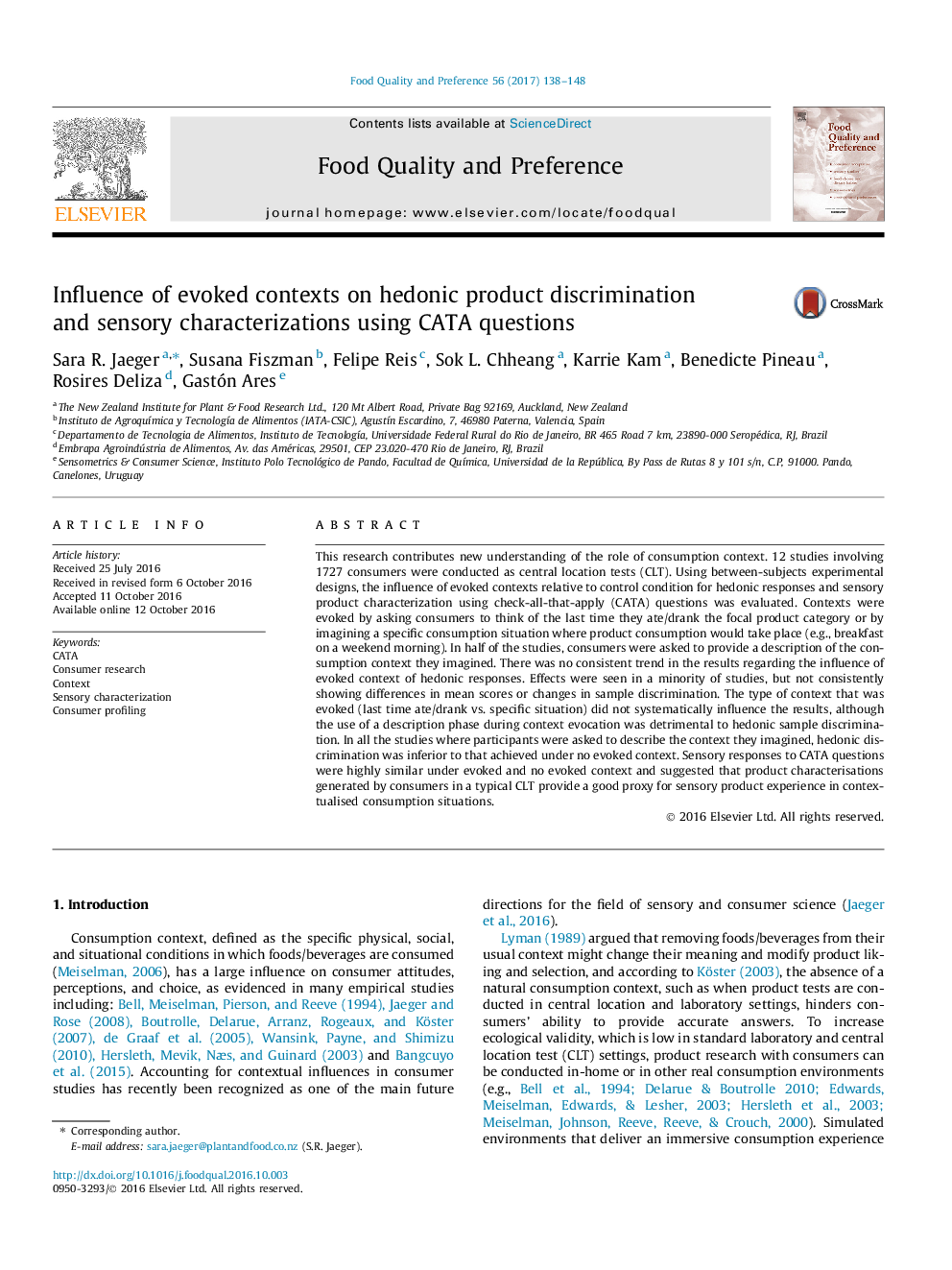| Article ID | Journal | Published Year | Pages | File Type |
|---|---|---|---|---|
| 6481972 | Food Quality and Preference | 2017 | 11 Pages |
â¢The influence of evoked contexts relative to control condition was evaluated in central location tests.â¢Product and study specific factors contributed to the influence of evoked context on hedonic scores.â¢Sensory responses to CATA questions were highly similar under evoked and control condition.
This research contributes new understanding of the role of consumption context. 12 studies involving 1727 consumers were conducted as central location tests (CLT). Using between-subjects experimental designs, the influence of evoked contexts relative to control condition for hedonic responses and sensory product characterization using check-all-that-apply (CATA) questions was evaluated. Contexts were evoked by asking consumers to think of the last time they ate/drank the focal product category or by imagining a specific consumption situation where product consumption would take place (e.g., breakfast on a weekend morning). In half of the studies, consumers were asked to provide a description of the consumption context they imagined. There was no consistent trend in the results regarding the influence of evoked context of hedonic responses. Effects were seen in a minority of studies, but not consistently showing differences in mean scores or changes in sample discrimination. The type of context that was evoked (last time ate/drank vs. specific situation) did not systematically influence the results, although the use of a description phase during context evocation was detrimental to hedonic sample discrimination. In all the studies where participants were asked to describe the context they imagined, hedonic discrimination was inferior to that achieved under no evoked context. Sensory responses to CATA questions were highly similar under evoked and no evoked context and suggested that product characterisations generated by consumers in a typical CLT provide a good proxy for sensory product experience in contextualised consumption situations.
